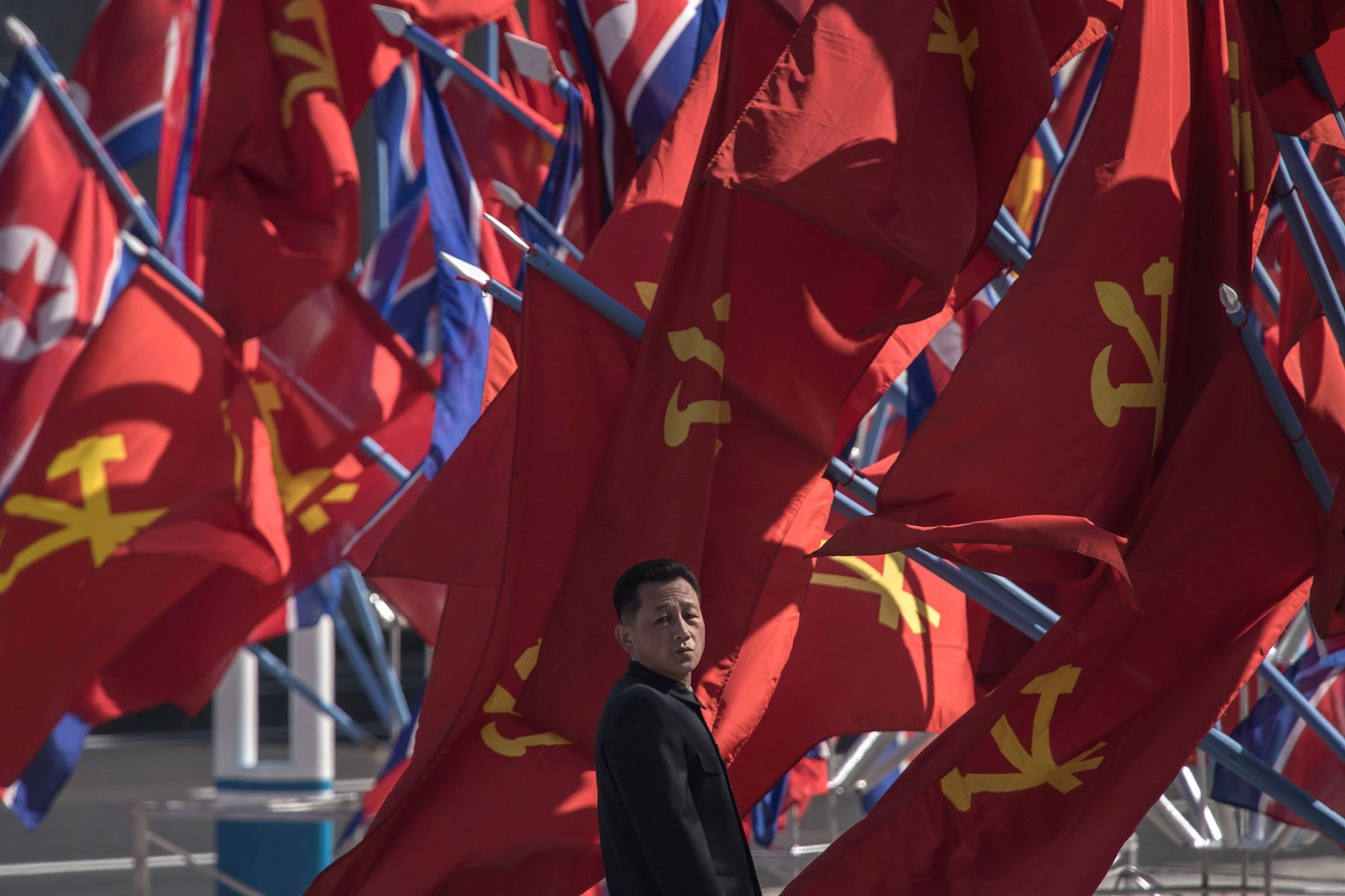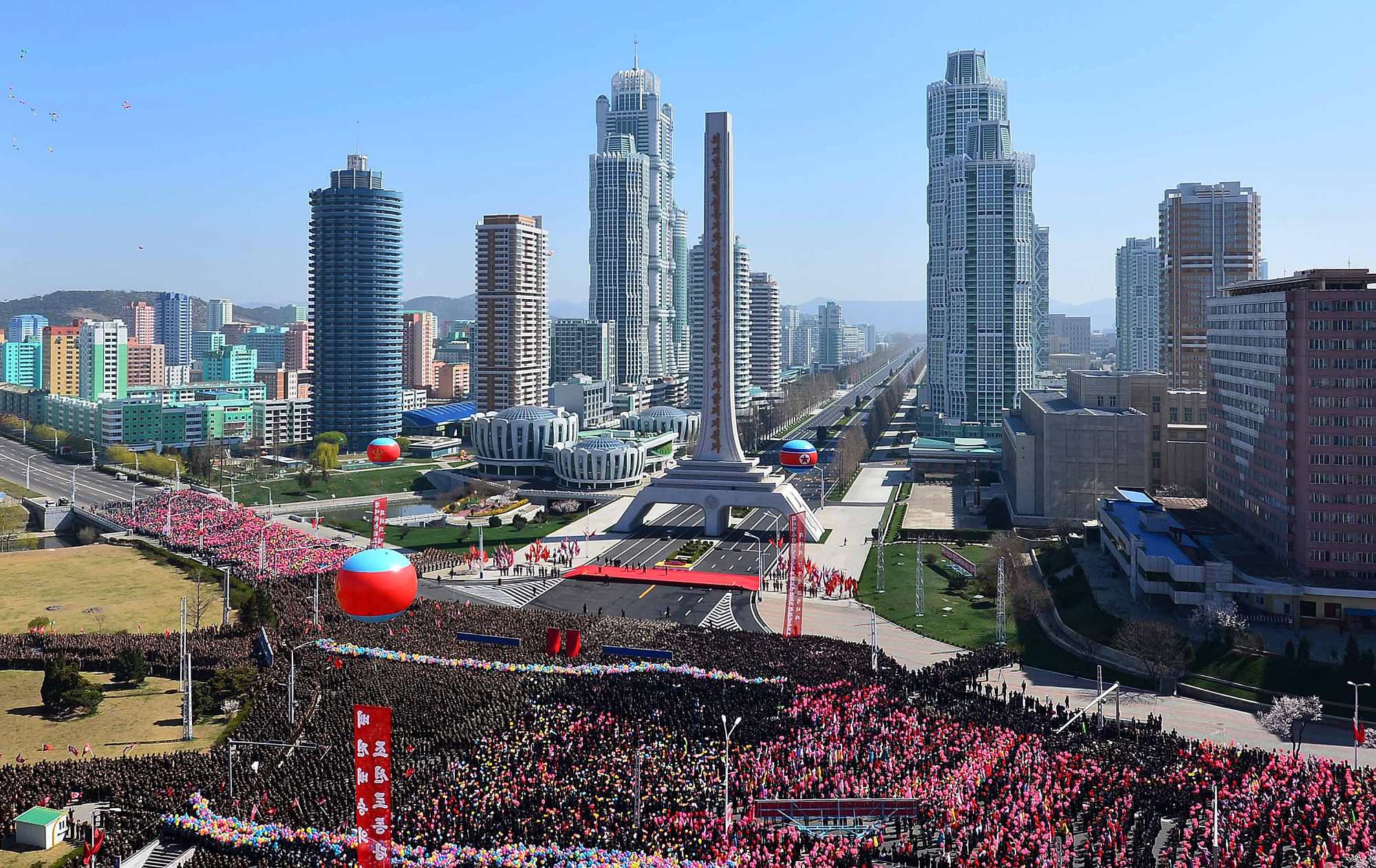Guest commentary by Hichem Karoui
April is a special month in the Democratic People's Republic of Korea (DPRK).
April 15 is the Day of the Sun, and this year, the nation celebrates its 105th birthday of its founder, Kim Il Sung. Hundreds of foreign journalists are now in Pyongyang to report the events.
But on April 8, the US aircraft carrier Carl Vinson, along with three guided-missile destroyers and cruisers left Singapore and headed toward the DPRK’s coast. Will this spoil the event?
Tensions are running high, following defying declarations from both sides, the US and the DPRK.

A man stands before flags as DPRK's leader Kim Jong Un arrives for the opening ceremony for the Ryomyong Street housing development in Pyongyang on April 13, 2017. / CFP Photo
Foreign observers often expect big events in April in the DPRK. If we follow history, they are not always wrong.
A sixth nuclear test, some say, may be in the works, recalling another test in April, 2012, when the DPRK attempted to launch a long-range rocket...which failed!
April is also a special month for the DPRK, and not because of Sun Day.
On April, 25, the nation will celebrate the founding of the DPRK’s People's Army.
April also coincides with the fifth anniversary of Kim Jong Un's accession to power.
Also, if we go back to April 11, 1951, we will remember the wisdom of President Truman, relieving General MacArthur as UN Commander, when the latter, realizing that the DPRK was not going to be subdued, argued for the use of atomic bombs.
In April 1969, the DPRK shot down EC-121, a US reconnaissance aircraft over the East Sea (Sea of Japan), for "spying activities." The US first threatened, and finally abandoned the idea of conducting a retaliatory nuclear operation against the DPRK.
Even South Korea commenced its first commercial operation of a nuclear power reactor in April 1978. By September 1989, it had nine nuclear power reactors under operation.
On April 9, 1992, the DPRK ratified the long-delayed nuclear safeguards at the third session of the Supreme People's Assembly (SPA).

People gather for the opening ceremony of a newly constructed residential area on Ryomyong Street in Pyongyang on April 13, 2017. / CFP Photo
The nuclear safeguards agreement between the IAEA and the DPRK was put into force on April 10, 1992. Thereafter, the DPRK showed its apparent sincerity by opening its nuclear facilities and materials.
But on April 1, 1993, the IAEA declared that the DPRK was not adhering to its safeguards agreement and that it could not guarantee that the DPRK’s nuclear material was not being diverted for non-peaceful uses...
China opposed the IAEA resolution adopted on April 1, 1993 that decided the referral of the nuclear issue of the DPRK to the UN Security Council.
It was not until April 23-25, 2003, when the United States, the DPRK, and China held trilateral talks in Beijing. Pyongyang, at the time, seemed ready "to get rid of all the nuclear programs…[and] stop their missile exports," according to the then US Secretary of State Colin Powell, who stated on April 28 that the DPRK expects “something considerable in return” for this effort. Something that Washington was not ready to deliver.
The DPRK still accuses the United States of violating the spirit of the 1992 Joint North-South Declaration on the Denuclearization of the Korean Peninsula, calling the agreement a “dead document”.
Meanwhile, China continues its efforts for peaceful solving of the problem. History is often made in the DPRK in April, so let’s hope that if history is made this April, it is only for good reasons.
(Dr. Hichem Karoui, is Non-Resident Senior Fellow at the Center for China and Globalization, and a diplomatic adviser. The article reflects the author’s opinion, not necessarily the view of CGTN.)
814km










